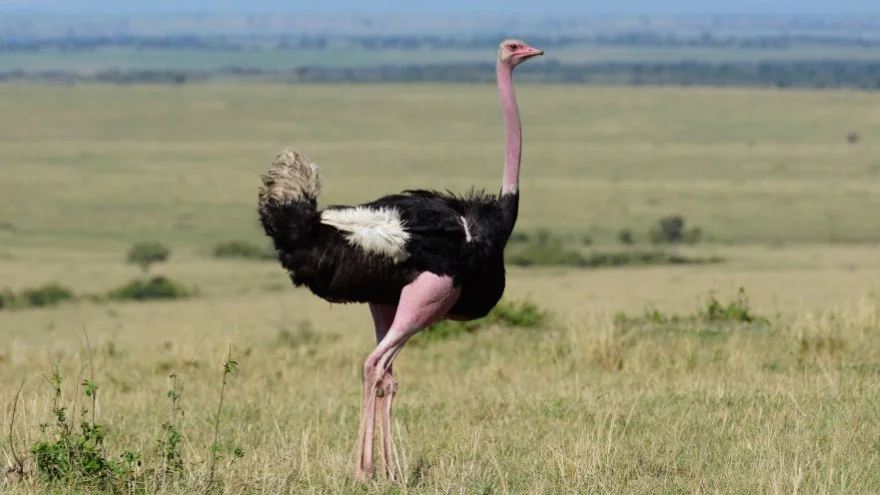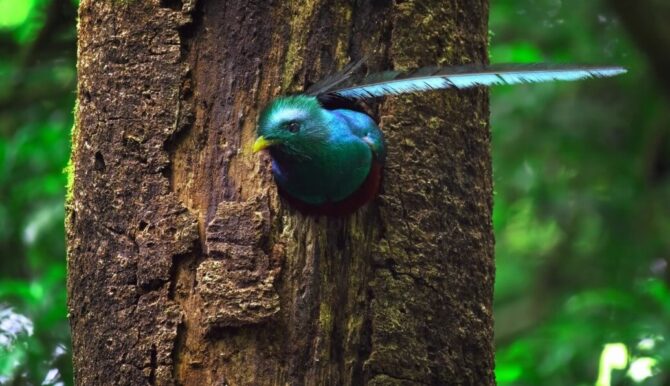The top fifteen largest birds in the world, including flightless birds like the ostrich and cassowary, will be covered in this article.
A simple glance at the sky will reveal various birds, each with unique characteristics, from their sounds to the colors they wear to their diverse sizes.
However, birds do not only occupy the sky; they return to ground level allowing you to observe their various sizes and forms, some of which are larger than others, much like their counterparts above.
We based our selection of the biggest birds in the world on various metrics, including wingspan, height, and weight. Therefore, some birds could be taller than others but weigh less or have smaller wingspans.
The Biggest Birds in the World
15. Wandering Albatross

Scientific Name: Diomedea exulans
Size: 8 ft 3 in – 11 ft 6 in (height); 12 kg (weight)
The largest albatross species, the wandering albatross, can weigh up to 12 kg.
The wingspan of a wandering albatross ranges from 8 feet 3 inches – 11 feet 6 inches, making it the bird with the world’s longest wingspan.
The huge, stunning bird, a native of the Southern and North Pacific oceans, can glide for great distances without flapping its wings.
14. King Penguin
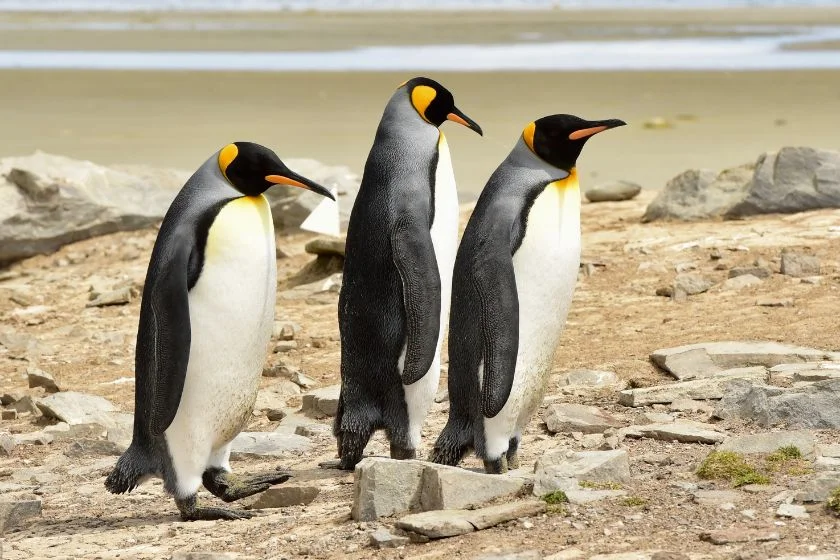
Scientific Name: Aptenodytes patagonicus
Size: 3 ft, 3 in (height); 18 kg (weight)
The king penguin is the world’s second-largest, growing large enough to rank amongst the world’s largest birds.
It reaches three feet and three inches and may weigh up to eighteen kilograms.
The king penguin is a flagship species, with size being a highly contributing factor; there were 176 individuals in captivity in North American zoos and aquariums in 1999.1
One can find them in the South Indian and South Atlantic Oceans, where they hunt lanternfish, squid, and krill.
13. Lesser Rhea
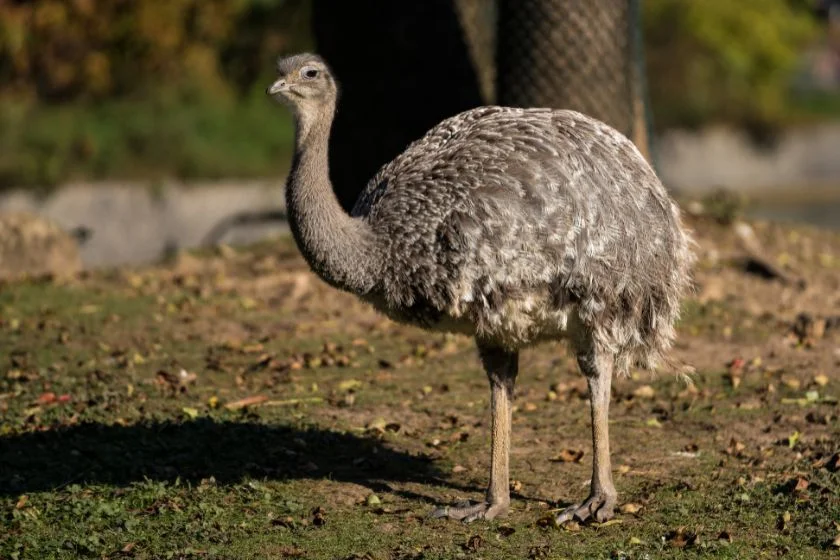
Scientific Name: Rhea pennata
Size: 3 ft, 3 in (height); 20 kg (weight)
These birds, reaching three feet, are wild birds that inhabit open scrubs in the South American grasslands of Bolivia, Argentina, Peru, and Chile.
Do not be fooled by the name; the lesser rhea is also a large bird, even though its extent rhea counterpart, the greater rhea, is larger.
While one may expect the lesser rhea to have a large appetite for flesh, it is surprisingly a herbivore. However, they occasionally eat small reptiles and insects.
12. Emperor Penguin
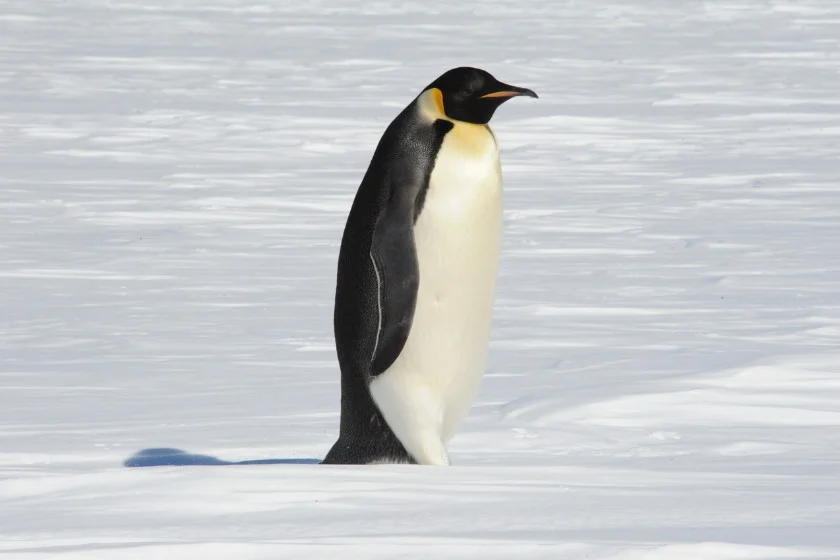
Scientific Name: Aptenodytes forsteri
Size: 4 ft, 3 in (height); 24 kg (weight)
Though not literally from a royal family. Emperor penguins exude royalty as they stand straight and tall; they are the tallest and heaviest penguin species.
They can only be seen in Antarctica. Emperor penguins can reach four feet, three inches, with an average height range of over four feet and a weight of twenty-four kilograms.2
Although penguins are classified as birds, their wings are better suited to water. The wings of a penguin are more like flippers that allow them to swim in the water.
11. Domestic Turkey
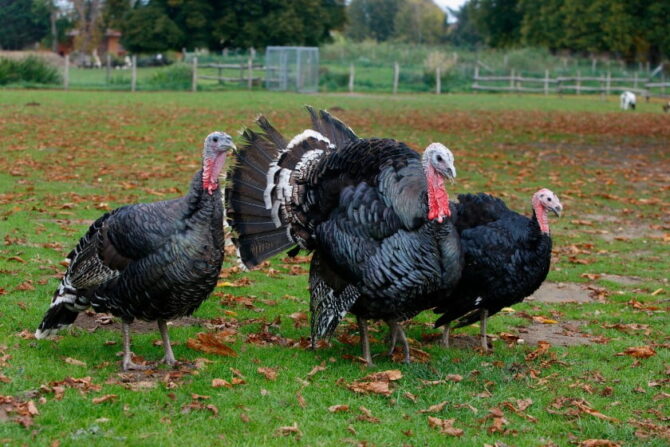
Scientific Name: Meleagris gallopavo domesticus
Size: 4 ft, 3 in (height); 39 kg (weight)
The wild and domestic turkeys are the same species, but the domestic turkeys are selectively bred to grow and weigh more.
However, we see turkeys so often that we may need to remember to classify them as one of the world’s largest birds.
Still, they may grow above four feet and weigh almost forty kilograms.
10. Kori Bustard
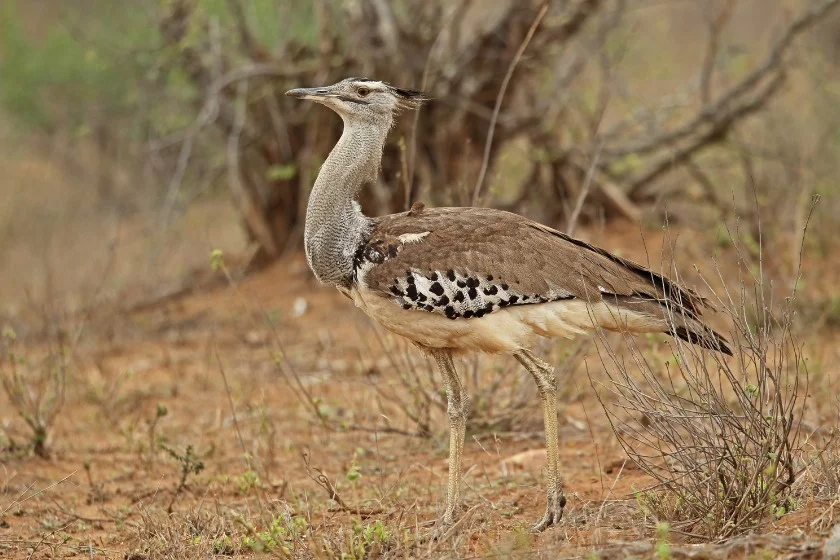
Scientific Name: Ardeotis kori
Size: 4 ft, 5 in (height); 19 kg (weight)
Kori bustards are very large birds. They are known as the heaviest flying bird native to Africa.
In contrast to the females, which range in weight from 3 to 7 kg, male kori bustards weigh between 7 and 18 kg, so if you see one that seems particularly enormous, it probably belongs to the male.
The male kori bustard’s wingspan ranges from 7 feet 7 inches to 9 feet 0 inches, which is amazing. Even though they have large wings, they do not frequently fly unless necessary.
9. Shoebill

Scientific Name: Balaeniceps rex
Size: 4 ft, 11 in (height); 6 kg (weight)
The stork’s large, highly noticeable shoe-shaped bill earns it the famous name. The Shoebill’s enormous bill is just one of its popular features.
It is famed for its height, growing up to four feet, eleven inches; little wonder it is among the five most desirable birds in Africa according to birdwatchers.
The Shoebill is a carnivore, using its size and enormous bill to hunt various animals, including water snakes, catfish, and occasionally, monitor lizards.
8. Marabou Stork
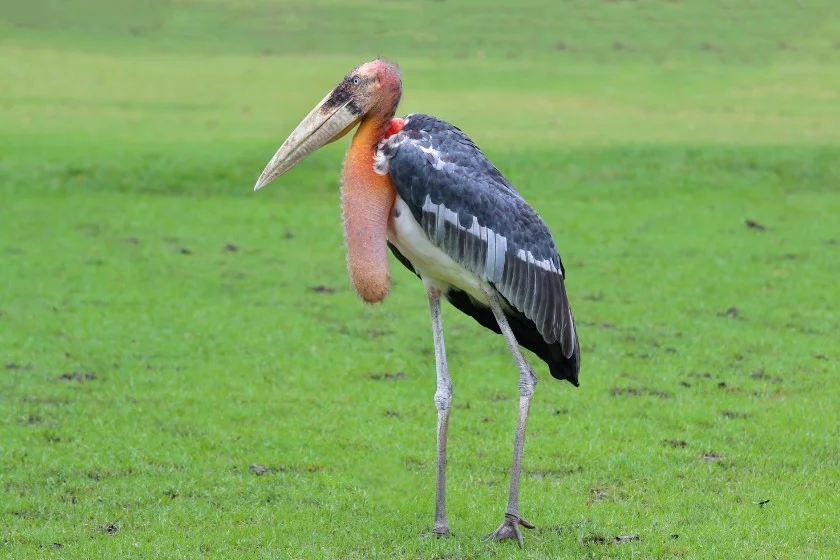
Scientific Name: Leptoptilos crumenifer
Size: 4 ft, 11 in (height); 9 kg (weight)
The marabou stork inhabits the Sahara’s wet and arid habitats and occurs near human residency. It is a large bird reaching four feet, eleven inches, and weighing up to nine kilograms.
Their wingspans could reach seven feet even though there are unverified reports of twelve and thirteen feet.
The marabou stork scavenges for food, feeding on human refuse, dead elephants, and other carcasses. However, they also eat termites, small birds, mammals, and flamingos.
7. Greater Rhea
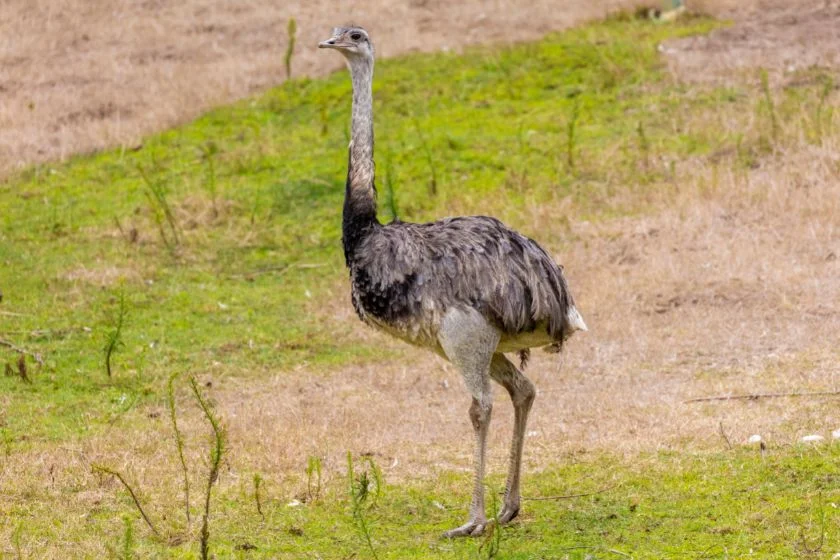
Scientific Name: Rhea americana
Size: 4 ft, 11 in (height); 35 kg (weight)
The largest bird species in South America is the flightless greater rhea. They can weigh up to 27 kg and range in length within the four-foot margin, with the male being larger than the female.
The large wings of greater rheas are not used for flight; the greater rhea is fast and capable of reaching 35 kilometers per hour using their long, powerful legs; they also use those large wings to balance their body while moving.
Additionally, the wings enable them to shift course while running.
6. Mute Swan & Trumpeter Swan

Scientific Name: Cygnus olor; Cygnus buccinator
Size: 5 ft, 8 in (height); 14 kg (weight)
Swans are a genus of waterfowl that can swim and fly with amazing speed and agility. The trumpeter swan and the mute swan, two members of the swan family, share this spot.
Male Trumpeter Swans weigh an astonishing average of over 26 pounds. Their height is around 5.5 feet, and their wingspan is roughly ten feet.
The thirty-pound mute swan is the heaviest member of the swan family.
The Mute swan is a huge water bird that can reach a length of five feet and eight inches and weigh 10 to 14 kg. They are native to European nations.
5. Dalmatian Pelican
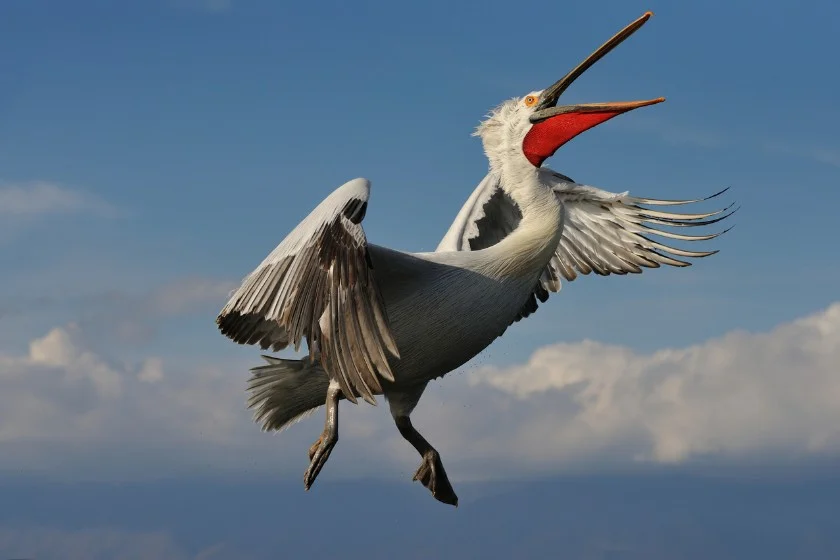
Scientific Name: Pelecanus crispus
Size: 5 ft, 8 in (height); 15 kg (weight)
One of the world’s heaviest-flying birds is the Dalmatian Pelican. They originated in Europe and South Asia.
This large bird is over five feet tall and weighs between 12 and 14 kg. They resemble Great white pelicans, but unlike them, Dalmatian pelicans are larger.
The wingspan of an adult Dalmatian pelican can reach up to nine feet. Their bills alone can grow up to eighteen inches long — the second largest in the world.
4. Cassowary
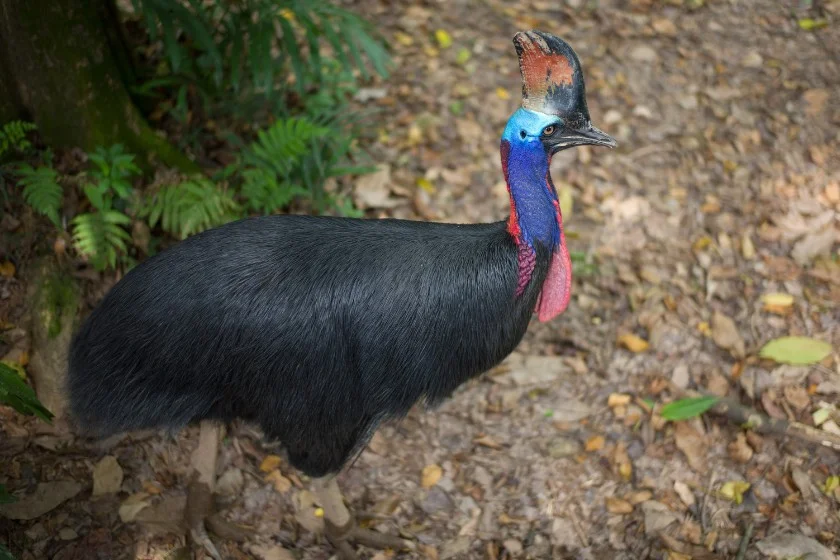
Scientific Name: Casuarius
Size: 5 ft, 6 in – 5 ft, 10 in (height); 70 – 85 kg (weight)
Cassowaries are enormous birds found in Australia, New Guinea, and Indonesia.
The southern and northern cassowaries are the largest cassowary species, reaching similar heights within the five-foot range.
The southern cassowary is a large, dark flightless bird native to the tropical rainforests of Indonesia and Australia.
It stands five feet tall and weighs 75-80 kg. The northern cassowary, only found in northern New Guinea, can weigh up to 70 kilograms, with females being larger than males.
3. Emu
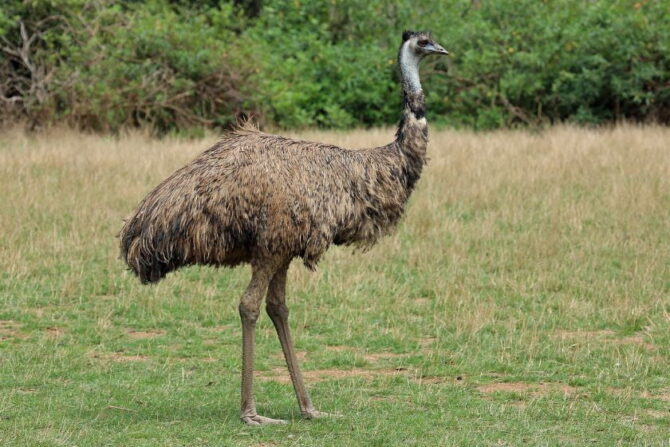
Scientific Name: Dromaius novaehollandiae
Size: 6 ft (height); 60 kg (weight)
The emu is the world’s second tallest bird, only being surpassed in height by the ostrich. This Australian flightless bird can reach heights of over six feet and weigh up to 60 kg.
They are also swift birds, with a top speed of 48 kilometers per hour, and they run with stability thanks to their three-toed feet and small wings.
They can be found in Australia’s savannas, woodlands, and other forest ranges.
2. Somali ostrich
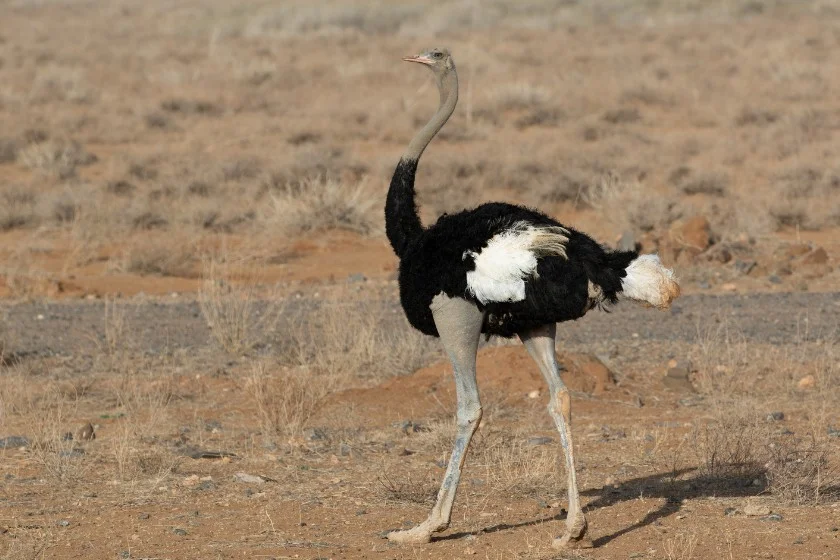
Scientific Name: Struthio molybdophanes
Size: 8 ft, 10 in (height); 130 kg (weight)
The Somali ostrich was designated as a distinct species from the common ostrich in 2014.
The Somali ostrich, native to Somalia and parts of Ethiopia and Kenya, is similar in size to other ostriches but has a slightly smaller body mass.
The Somali ostrich weighs between 90 and 156 kilograms. It can run 5 meters in a single stride.
1. Common Ostrich

Scientific Name: Struthio camelus
Size: 9 ft (height); 180 kg (weight)
The common ostrich is the largest living bird in the world. Additionally, they are the heaviest birds in existence.
They are incapable of flight due to their weight. Instead, common ostriches can run up to 43 kilometers per hour and are excellent at using their long, powerful legs as defensive weapons.
A mature ostrich can grow to a height of nine feet and weigh up to 160 kilograms.
Frequently Asked Questions
What are the largest flying land birds in America?
The California condors (Gymnogyps californianus) and Andean condors (Vultur gryphus) are the Americas’ largest flying birds. The California condor (Gymnogyps californianus) holds prestige in North America, while the Andean condor (Vultur gryphus) is South America’s largest.
What is the largest bird of all time?
According to an article in The New York Times, scientists suggest the Elephant Bird is the largest bird ever. However, the Dromornis stirtoni, an Australian flightless bird, comes close to the elephant bird.
What is the world’s smallest bird?
The bee hummingbird (Mellisuga helenae) is the world’s smallest bird, measuring no more than 2.3 inches and not up to two grams.
Wrap Up
Birds are widely regarded as the most beautiful and graceful creatures on the planet. They are also one of the most popular pets for people to own.
Birds come in various sizes and shapes and number over 10,000 species worldwide.
Have you come across any of these biggest birds in the world? They are truly magnificent in close range.
Next up…
- 30 Beautiful Birds With Mohawks (With Pictures & Facts)
- 10 Unique Flowers That Look Like Birds You Can Grow
- 30 Purple Birds List (Species With Pictures & Facts)
- 15 Birds That Look Like Robins But Aren’t (w/ Pictures)
References & Notes
- Diebold E.N., Branch S. and Henry L., 1999. Management of Penguin Population in North American Zoos and Aquariums. Marine Ornithology.
- Finding emperor penguin colonies. Australian Antarctic Program
